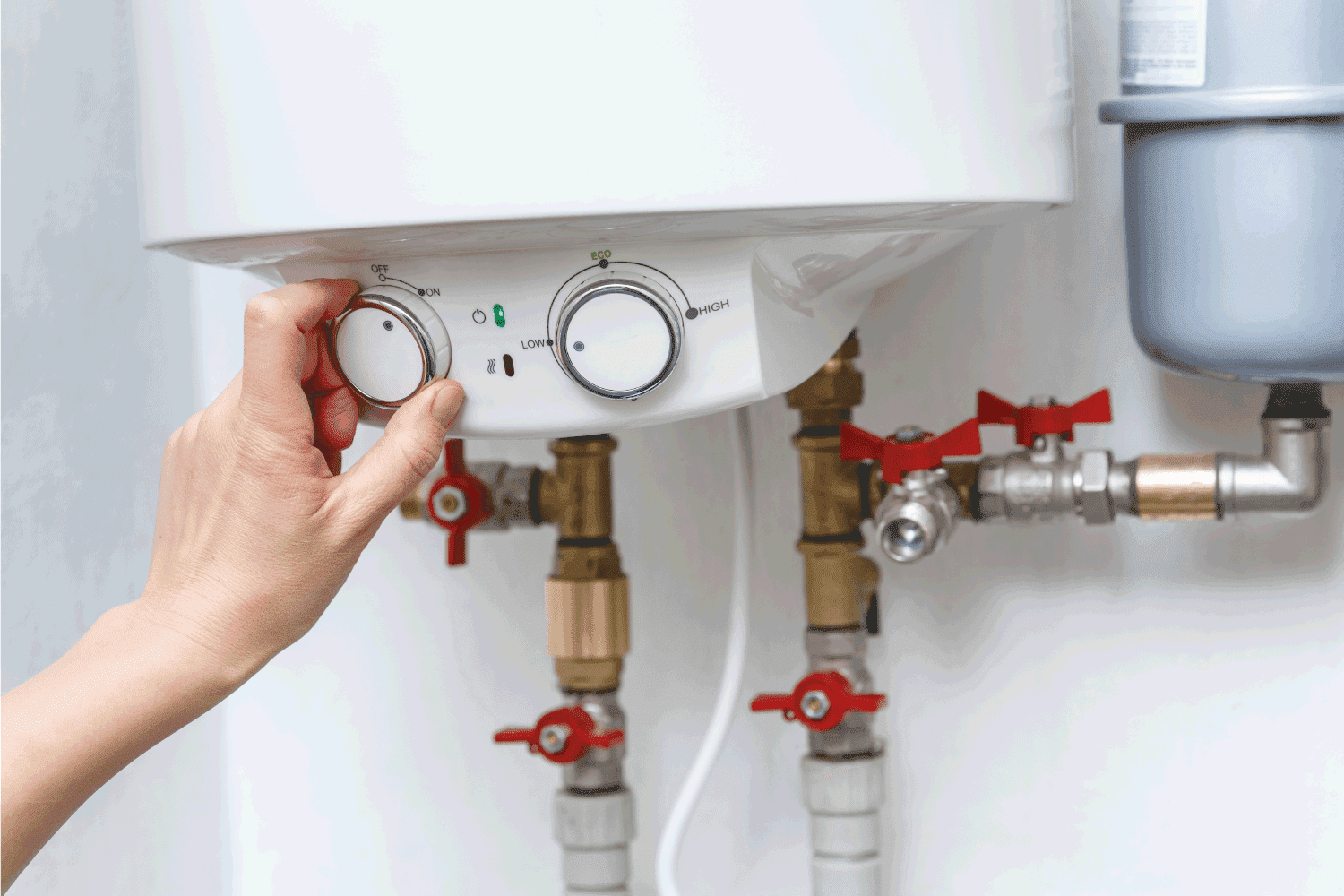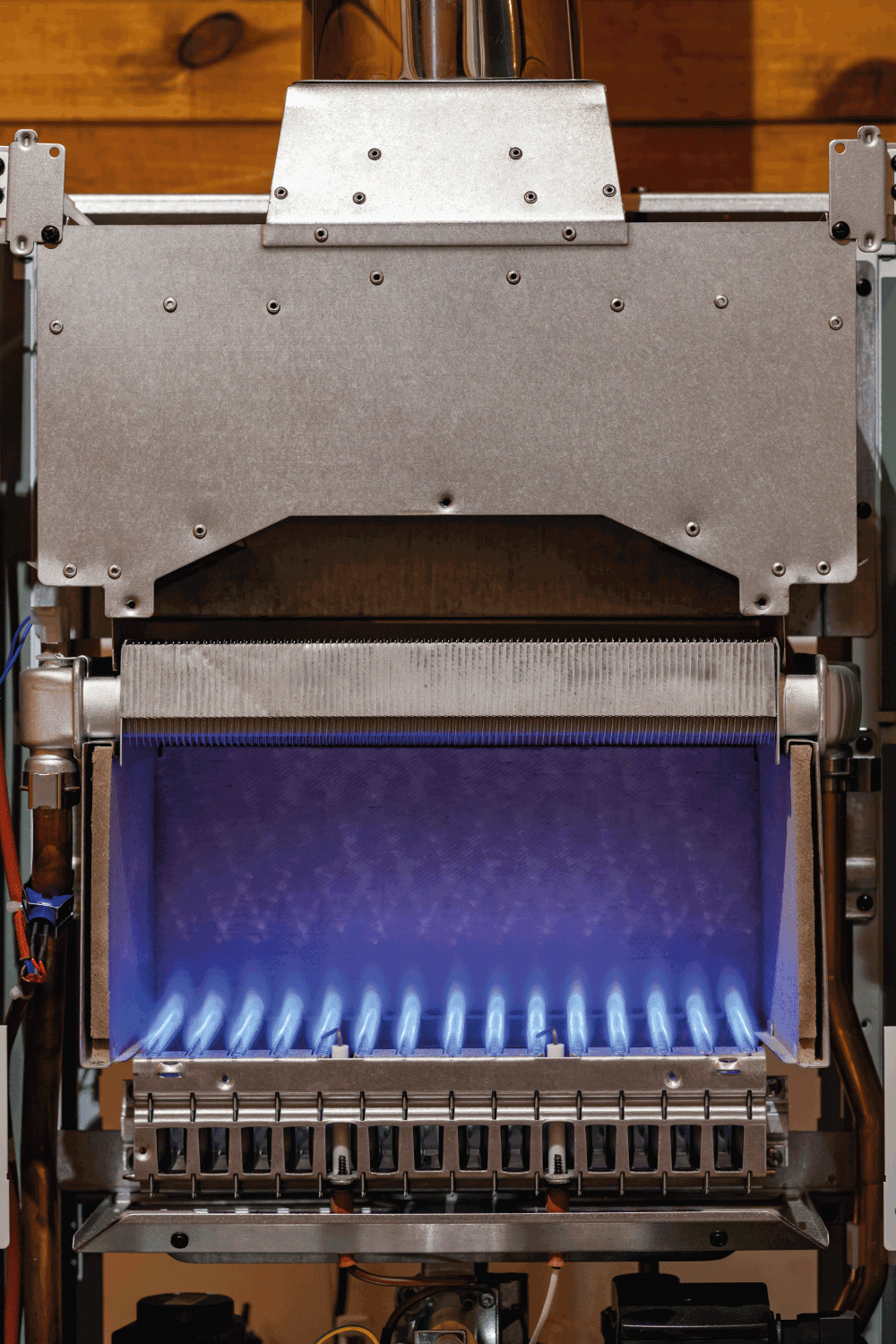When energy is converted in a furnace to create heat, it allows the central system to circulate that heat to an entire building. For some homes and other buildings, a central heating system is a necessity. We’ve compiled some key information for you about placing a furnace in your garage.
A furnace is an oven-like heating device that generates heat through energy combustion. It is most commonly placed in a basement, garage, or attic. Ideally, the criteria to put a furnace in the garage include sufficient fresh air circulation, access to natural gas or electrical lines, an area for a vent, and adequate garage space.
Now that we know a furnace can be put in a garage, let’s dive more into the details of setting one in a furnace-ready garage. You might be wondering where in the garage it should be placed or how big the heating device should be. Keep on reading to see the answers to the most asked questions for furnaces in a garage.

Where Should a Furnace be Placed in a Garage?
Traditional furnaces use wood or coals, while modern furnaces use natural gas or electrical connections --they are much safer than the former. Regardless, both types are suitable for any area of the garage as long as the ideal criteria are met.
An Area with Air Circulation
The central heating system distributes the heat that is generated from the furnace through PVC pipes or a ventilation system. It’s essential to guarantee that a garage is furnace-ready with sufficient fresh air circulation.
The furnace pulls air from its environment, and if it pulls stagnant garage air, it will release heat based on that bad air. Remember that every appliance requires adequate room to breathe, and it’s best to avoid putting them near one another to prevent carbon monoxide poisoning.
An Area with Natural Gas or Electrical Lines
For modern furnaces, this criteria is vital. One must consider the power sources for a furnace to best fit in that part of the garage. The garage can house many appliances, and it is a priority to give each of them access to the maximum power they require to work.
Before positioning a furnace in a specific area in the garage, check your natural gas lines and electrical connections. Be sure that these sources are capable of giving the gas or electrical demands of a furnace for it to function efficiently.
An Area for a Vent
A furnace vent is just as crucial when considering the placement of a furnace in a garage. A vent helps exclude hazardous gases from being circulated into the central heating system. This also protects the heating device from overheating and thus, preventing damage.
An Area with Adequate Space
It is not advisable to shove a furnace to whatever area it fits. There should be enough space around its surrounding for it to function effectively. Extra space also allows you to tinker with the furnace.
Another thing to consider is that it would be easier to repair or maintain the furnace when you can move freely in its space.
How Big of a Furnace Do I Need for my Garage?
The size of the furnace affects its capacity to generate enough heat to circulate in a house or building. For this reason, it’s an advantage if you know how to calculate the right-sized furnace for your garage space.

Electrical Furnace
This type of furnace runs on wattage or watts, and the standard rule to follow is to aim for 10 watts per square footage of the garage. To calculate this, multiply the width and length of the garage. The product is the square footage, which you multiply by 10 to find out the required wattage acceptable for the available garage space.
British Thermal Units are also commonly associated with furnaces instead of wattage. Simply convert watt to BTU with 1 watt equal to 3.5 BTUs.

Gas Furnace
Calculating the right size of gas furnace for the garage is different from that of the electrical furnace. Instead of the 10 watts per square footage of the floor space, multiply the product of the width and length of the garage by the height from floor to ceiling.
Gas furnaces heat up more space than electrical furnaces do because they natural gas and flames to generate heat. This type of furnace also needs more working space.
Your furnace shouldn’t just depend on how good it suits the garage but more on its capacity to heat up the entire building.
How Much Does it Cost to Install a Furnace in a Garage?
Installation is not simply laboring. It comprises the furnace or the heating device itself, the installation of vents, establishing gas lines and electrical connections, and manual labor.
The price range to install a furnace in a garage can go from $2,000 to $4,000. You could save from the installation cost if your building was already made to be furnace-ready.
However, if the gas line or electrical connections are unreliable, proper air circulation is lacking, or the garage is clearly not furnace-ready with most of the criteria unchecked, you may have to dole out more money for the installation process.
How Many BTU Does it Take to Heat a 2 Car Garage?
There is a direct relationship between BTU and garage space. This means that BTU requirement increases as the size of the garage increases.
A 2 car garage is roughly 500 square feet in size, and it entails 15,000 to 30,000 BTU depending on your location and the area’s warm or cold climate.
If the furnace uses wattage, it is easy to convert BTU to watt. In fact, there are BTU heating calculators available online that can help give you a specific BTU or watts.
As BTU increases, so does the cost. Some tips to lower down BTU demand are to ensure that your garage is properly insulated, the effectiveness of the central heating system, and the compactness in the garage. All these support that more heat can be circulated and distributed for lesser heat produced.
How Long Do Furnaces Usually Last?
One of the trickiest questions regarding furnaces is whether or not you should replace or dispose of them at a certain time. A furnace is not exactly cheap, and the installation process is already pricy enough.
Unfortunately, there is no specific answer to this question. However, the average lifespan of a furnace is usually 15 to 30 years. It may even go over 30 years and more if the heating device is consistently well-maintained.
One way to prolong the furnace’s lifespan is to stick to a regular maintenance routine. The quality of the heating device speaks for itself, but if it is not properly maintained, it may quickly shorten its lifespan.
There are many components that affect a furnace’s lifespan. You will have to watch out for the correct size of the furnace in relation to the garage space, its installation process and ventilation system, and its placement in the garage.
Furnaces are meant to withstand repetitive use for a long period of time. The quality of the heating device is important, but it becomes null and void if it’s not supported by proper maintenance and safekeeping.

Final Thoughts
A furnace can be stored in a basement or in an attic, but it is also best placed inside a garage. Still, it is not recommended to simply position it anywhere inside the garage that it can fit into. There are four vital criteria to secure it in the best area possible.
Make sure that the garage has fresh air circulating, proper ventilation, has ample power sources, and adequate space. To get the best out of your furnace while also saving costs, you can also lessen the BTU demands by following the tips above. Overall, a garage can be furnace-ready by easily assuring a few steps.
If you think this post was helpful, you might want to check these out:
How Big is an Electric Furnace?
